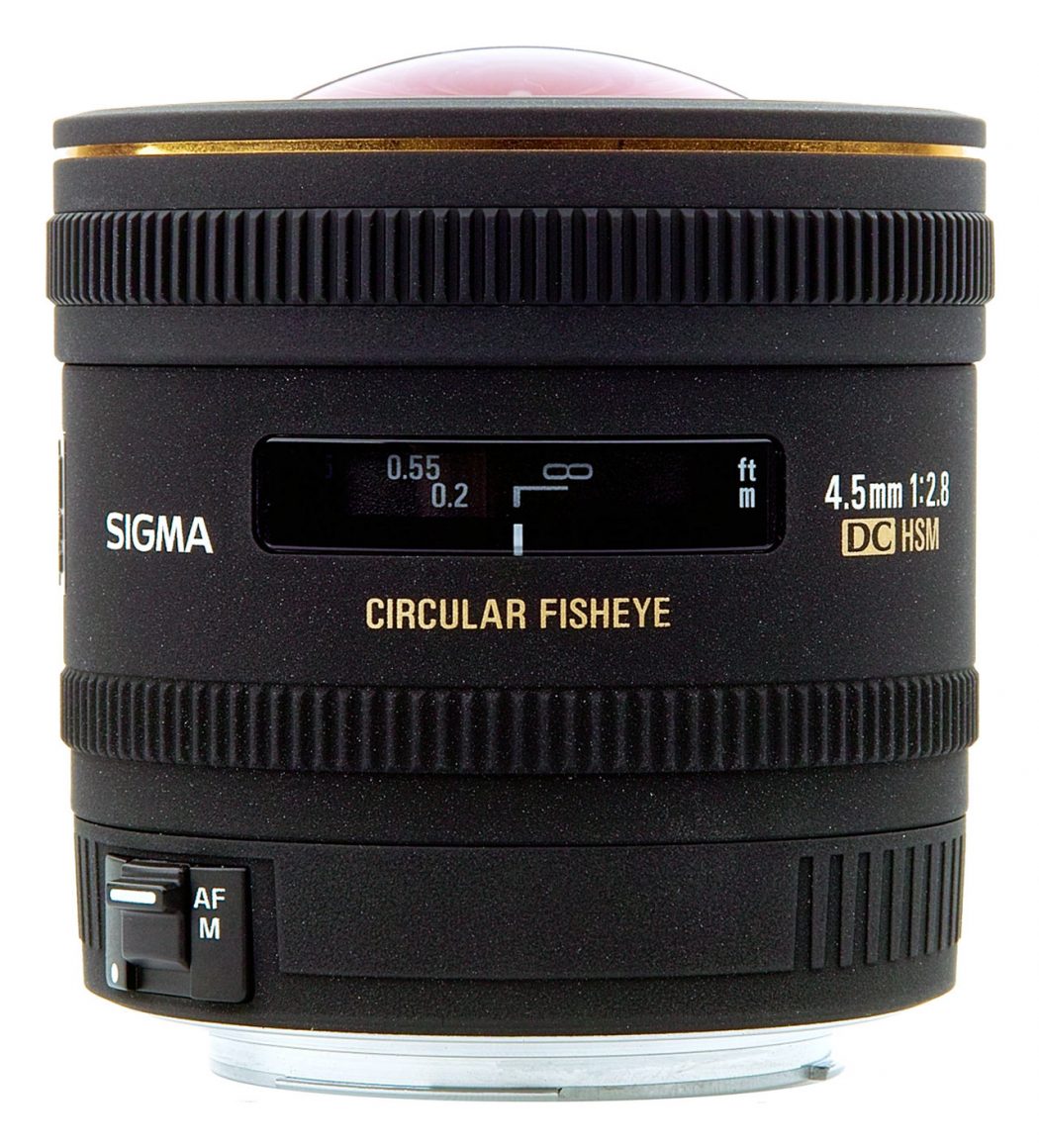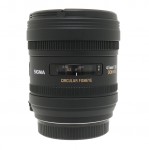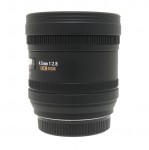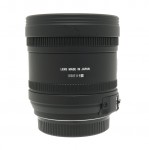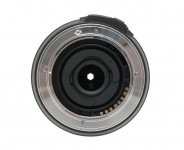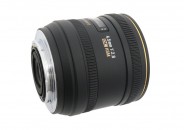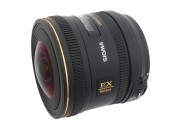Sigma 4.5mm F/2.8 EX DC HSM Fisheye
Fisheye lens • Digital era • Discontinued
Abbreviations
| EX | Professional lens with high quality optics and robust build. Meets the highest standards and provides excellent performance and flawless image quality unachievable with traditional optical technologies. |
| DC | The lens is designed for APS-C digital cameras only. |
| HSM | The lens is equipped with Hyper Sonic Motor. |
| FISHEYE | An ultra-wide angle lens with strong uncorrected barrel distortion and extreme angle of view. |
Specification
| Optical design: | |
| APS-C | |
| 4.5mm | |
| F/2.8 | |
| 13 elements in 9 groups | |
| 1 SLD | |
| Internal focusing (IF) | |
| Circular fisheye | |
| Canon EF [44mm] | |
| Minolta/Sony A [44.5mm] | |
| Nikon F [46.5mm] | |
| Pentax K [45.5mm] | |
| Sigma SA [44mm] | |
| 180° | |
| Diaphragm mechanism: | |
Diaphragm type: | Automatic |
Aperture control: | None; the aperture is controlled from the camera |
| 6 (six) | |
| Focusing: | |
| 0.135m | |
| 1:6 | |
Focusing modes: | Autofocus (AF), Manual focus (M) |
Autofocus motor: | Hyper Sonic Motor |
Manual focus control: | Focusing ring |
Focus mode selector: | AF - M |
Manual focus override in autofocus mode: | Yes |
| Optical Stabilizer (OS): | |
| - | |
| Physical characteristics: | |
| 470g (Sigma SA) | |
| ⌀76.2×77.8mm (Sigma SA) | |
| - | |
| - | |
| Accessories: | |
| Removable front filters are not accepted | |
Additional features: | Rear gelatin filter holder |
| Not available | |
| Not compatible |
Source of data
- Manufacturer's technical data.
Manufacturer description
This autofocus circular fisheye lens has an angle of view of 180 degrees in all directions. It is exclusively designed for digital SLR cameras with the APS-C size image sensor. When used in conjunction with digital SLRs with APS-C size image sensors, it produces circular image within the frame. The F2.8 large aperture value produces a bright image in the viewfinder and allows photographers to take pictures in low light conditions, making it an ideal lens for Astrophotography and Aurora photography. Due to the quantifiable angle/area relationship it produces, this lens can be used for scientific and arts applications such as solid angle measurements of cloud distribution over the sky or vegetation distribution of the forest. The minimum focusing distance of 13.5cm/5.3inch and maximum magnification of 1:6 make it particularly useful for close-up photography. SLD(Special Low Dispersion)glass provides effective compensation of chromatic aberration. Sigma’s Super Multi-Layer Coating minimizes flare and ghosting. It is equipped with an inner focusing system that creates high definition and good image quality over the whole frame. The HSM (Hyper Sonic Motor)ensures fast and quiet autofocusing and allows full-time manual focus override by rotation of the focus ring.
Typical characteristics of fisheye lenses
- Extreme angle of view (at least 180° diagonally);
- Circular types (the image circle of the lens is inscribed in the image frame) or diagonal types (cover the entire image frame);
- Usually of equidistant projection type, with the distance from the picture center to any given point always proportional to the angle from the optical axis to that point;
- Huge barrel distortion;
- Short closest focusing distance (0.20 - 0.30m with 35mm full-frame prime lenses);
- Very large depth of field, eliminating the need for autofocus or precise manual focusing;
- Due to the extreme angle of view and convex front element, front filters cannot be used;
- Often equipped with a filter turret with swivel-mounted filters;
- Often come with a small, built-in petal-shaped lens hood (*).
(*) Some APS-C models have a detachable lens hood, which allows such lenses to be used on 35mm full-frame cameras as circular fisheyes.
